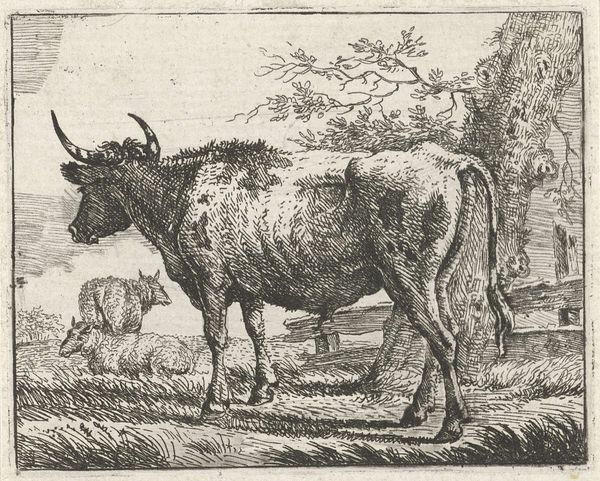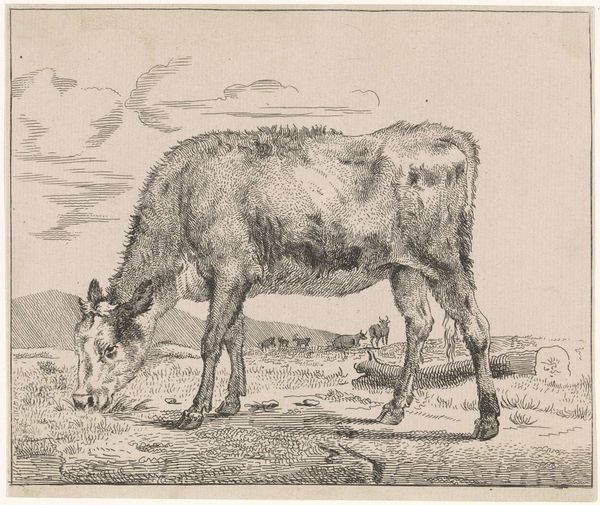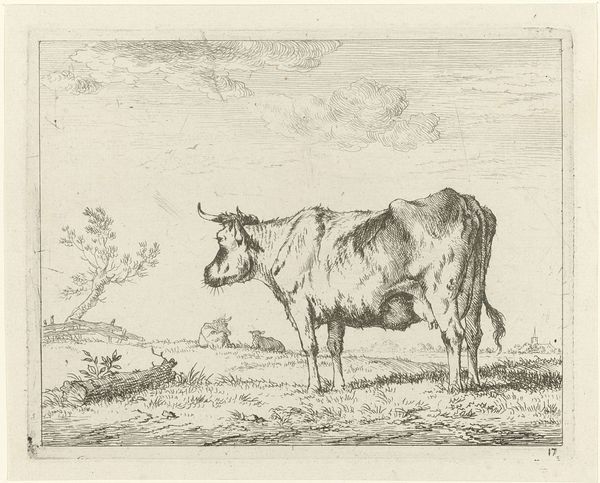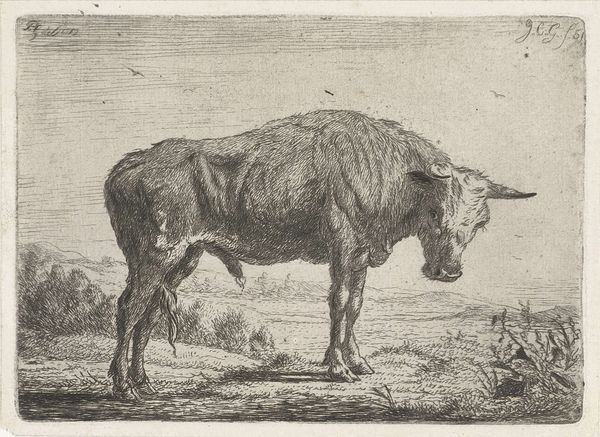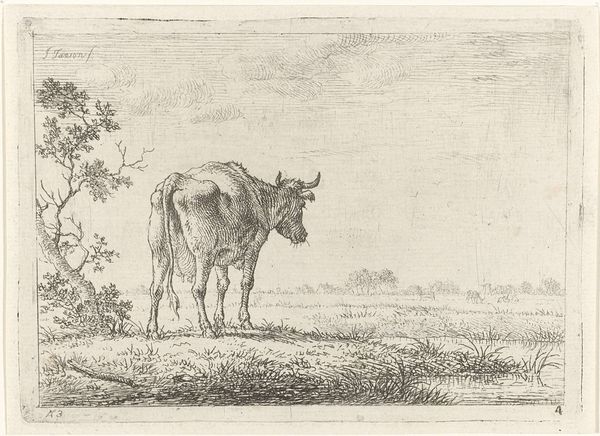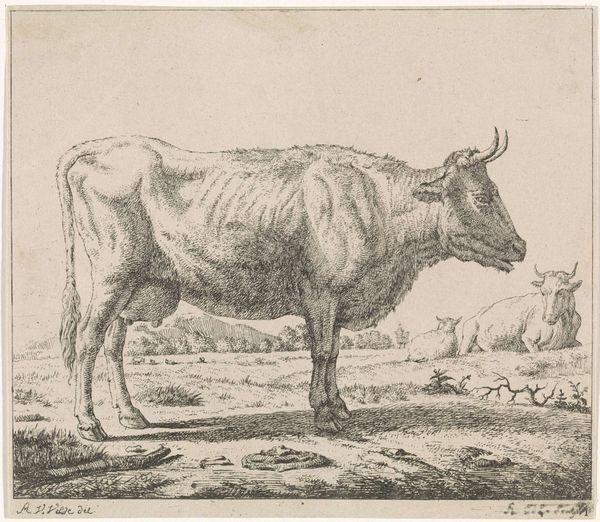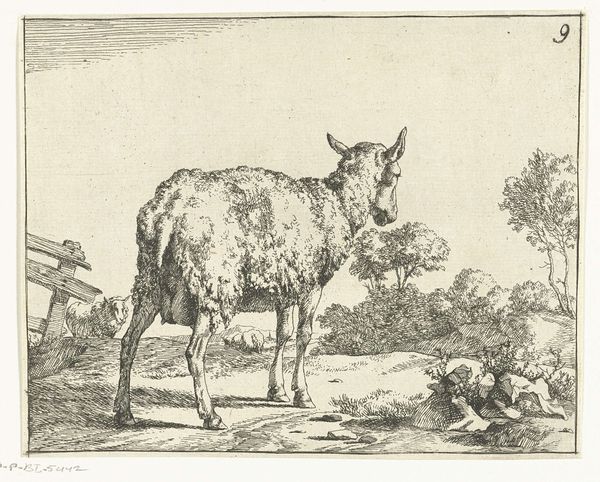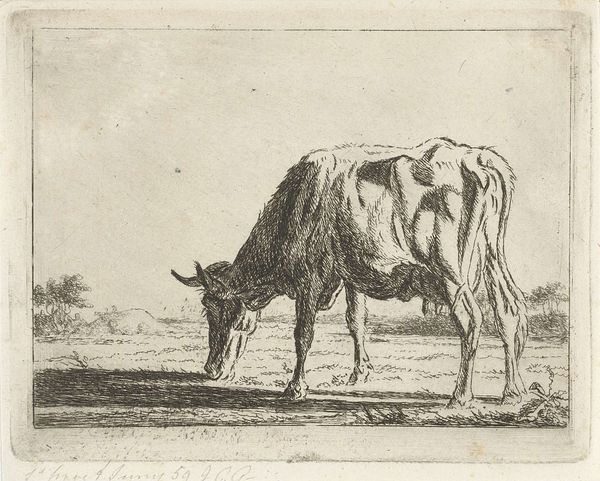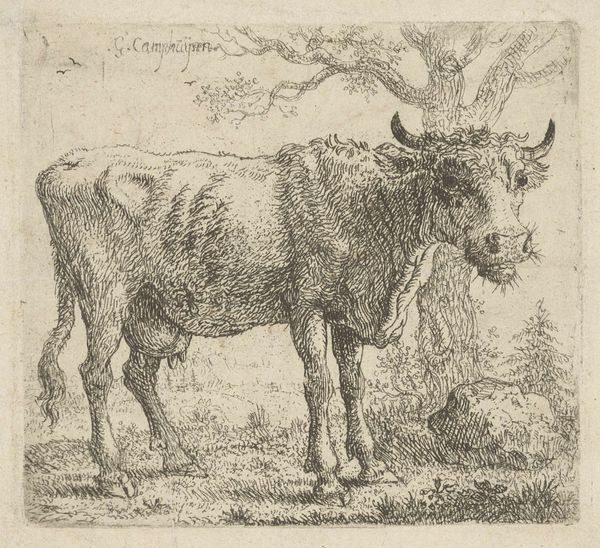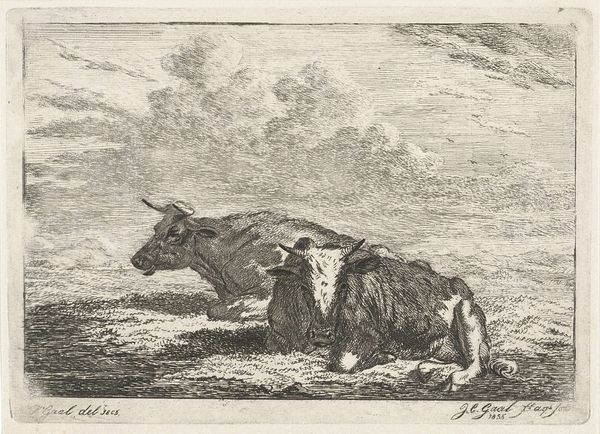
etching
#
animal
#
dutch-golden-age
#
etching
#
landscape
#
genre-painting
#
realism
Dimensions: height 104 mm, width 148 mm
Copyright: Rijks Museum: Open Domain
Editor: Here we have Johannes Janson's "Standing Cow," an etching from around 1761-1784. It feels like a very direct representation of rural life; the texture of the cow's fur is so detailed. What strikes you most about this piece? Curator: It's fascinating how Janson utilizes the etching technique to depict not just the cow, but also the landscape's raw materiality. Notice the marks that render the foliage—consider the tools, the acid, the very labor invested in creating this seemingly simple scene. How does this elevate the subject, the cow, within the social fabric? Editor: I hadn’t really considered the amount of work needed to produce an image like this! So you're saying that it speaks to the role of the cow, perhaps livestock in general, as a core element in 18th century rural life, elevated by the medium used to represent it? Curator: Precisely! Consider also the distribution of prints in that era. How might this image of a commonplace animal find its way into urban spaces, entering new dialogues surrounding food production, the agrarian economy, and even class distinctions? How does it function as a commodity in itself? Editor: So, even a simple image of a cow can reveal deeper societal structures and the ways in which art functioned within them. I will certainly think differently about art mediums going forward! Curator: Indeed! This reminds us that art isn't just about aesthetics, but about understanding its connection to labor, materials, and consumption patterns shaping social realities.
Comments
No comments
Be the first to comment and join the conversation on the ultimate creative platform.


